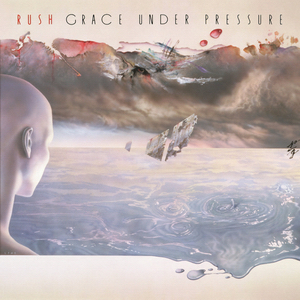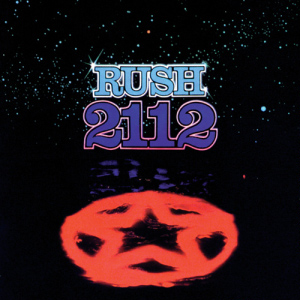
2112 is the fourth studio album by Canadian rock band Rush, released on April 1, 1976 by Anthem Records. After finishing touring for its previous album, Caress of Steel, in early 1976, the band was in financial hardship due to the album's disappointing sales, unfavorable critical reception, and a decline in attendance at its shows. The band's international label, Mercury Records, considered dropping Rush, but granted the band one more album following negotiations with manager Ray Danniels. 2112 was recorded in February 1976 in Toronto with longtime producer Terry Brown. Its centerpiece is a 20-minute title track, a futuristic science-fiction song that takes up the entire first side of the album. There are five individual tracks on side two.
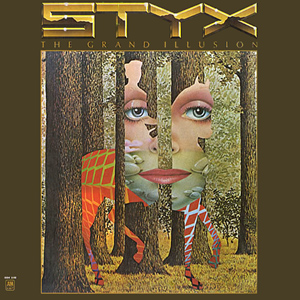
The Grand Illusion is the seventh studio album by Styx, it was released on July 7, 1977.

Fly by Night is the second studio album by Canadian rock band Rush, released in February 1975 on Mercury Records. It was the first Rush album to showcase elements of progressive rock for which the band has become known. It was also the first to feature lyricist and drummer Neil Peart.
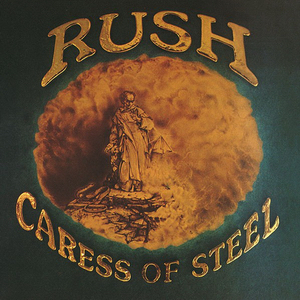
Caress of Steel is the third studio album by Canadian rock band Rush, released in 1975. The album showcases the band's continued evolution to hard progressive rock as opposed to the blues-based hard rock style of the band's first album.

The Cars is the debut album by the American new wave band the Cars. It was released on June 6, 1978 on Elektra Records. The album, which featured the three charting singles "Just What I Needed", "My Best Friend's Girl" and "Good Times Roll", as well as several album-oriented rock radio hits, was a major success for the band, remaining on the charts for 139 weeks.
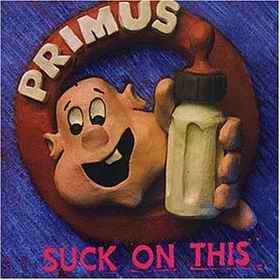
Suck on This is a live album by the band Primus, released in 1989. At the time of recording, the featured lineup of bassist/vocalist Les Claypool, guitarist Larry LaLonde and drummer Tim Alexander had only been playing together for "about two months". This along with Jane's Addiction's self-titled live album, are seen as popularizing the then-underground alternative metal genre and inspiring the groove metal genre.
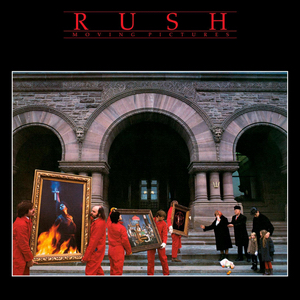
Moving Pictures is the eighth studio album by the Canadian rock band Rush, released on February 12, 1981, on Anthem Records. After touring to support their previous album, Permanent Waves (1980), the band started to write and record new material in August 1980 with co-producer Terry Brown. They continued to write songs with a more radio friendly format, featuring tighter song structures and songs of shorter length compared to their early albums.

Power Windows is the eleventh studio album by Canadian rock band Rush, released on October 14, 1985 by Anthem Records. After touring in support of their previous album, Grace Under Pressure (1984), the band took a break and reconvened in early 1985 to work on a follow-up. The material continued to display the band's exploration of synthesizer-oriented music, this time with the addition of sampling, electronic drums, a string section, and choir, with power being a running lyrical theme. Power Windows was recorded in Montserrat and England with Peter Collins as co-producer and Andy Richards on additional keyboards.

Rush in Rio is a three-disc live album by Canadian band Rush, released on October 21, 2003. The album is also available as a two DVD set. With the exception of the last two tracks on the third disc, the album was recorded at Maracanã Stadium in Rio de Janeiro on the final night of the Vapor Trails Tour. The other two tracks were taken from previous shows on the same tour. "Between Sun & Moon" was recorded at the Cricket Wireless Pavilion, Phoenix, Arizona, on September 27, 2002, and "Vital Signs" was recorded at the Colisée Pepsi, Quebec City, Quebec, on October 19, 2002.

"The Spirit of Radio" is a song released in 1980 by the Canadian rock band Rush from their album Permanent Waves. The song's name was inspired by Toronto radio station CFNY-FM's slogan. It was significant in the growing popularity of the band.
Body Electric may refer to these artworks, all named after "I Sing the Body Electric", an 1855 poem from Leaves of Grass by the American poet Walt Whitman:

Return to Paradise is a live album by Styx, released in 1997. It features songs from their successful reunion tour with Tommy Shaw, but without John Panozzo, who died in July 1996. It includes three new studio tracks, including "Dear John", which Shaw wrote as a tribute to Panozzo.

Brave New World is the thirteenth studio album by Styx, released in 1999. It is the band’s first studio album to feature drummer Todd Sucherman, replacing John Panozzo, who died in 1996 and the last album to feature keyboardist/vocalist Dennis DeYoung. The album peaked at #175 on the Billboard 200 and reached the top 10 on the Top Internet Albums chart. However, its position on the Billboard charts was the lowest from a Styx album of new material since 1973's The Serpent Is Rising.

"Start Me Up" is a song by the Rolling Stones featured on the 1981 album Tattoo You. Released as the album's lead single, it reached number one on Australian Kent Music Report, number two on the Billboard Hot 100 and number seven on the UK Singles Chart.
"Between the Wheels" is a song by the Canadian rock band Rush. It was released on their 1984 album Grace Under Pressure.
"Red Lenses" is a song by the Canadian rock band Rush. It was released on their 1984 album Grace Under Pressure. In the album's liner notes, the song's title and lyrics are in lower case only.
"The Camera Eye" is a song by the Canadian rock band Rush. It is the fifth song on their 1981 album Moving Pictures and is the longest song on the album.

"Subdivisions" is a song by Canadian progressive rock group, Rush, released as the second single from their 1982 album Signals.
"The Enemy Within" is a song by the Canadian rock band Rush. It was released on their 1984 album Grace Under Pressure.

